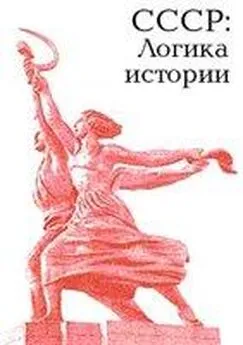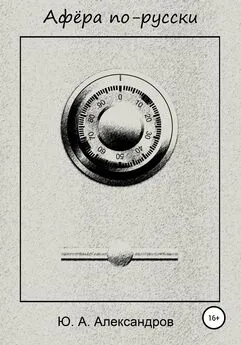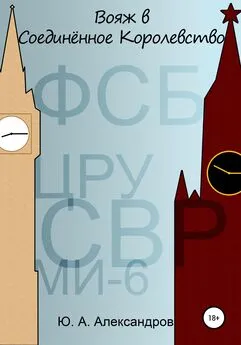Юрий Александров - Основы психофизиологии - Александров Ю.И. (ред.)
- Название:Основы психофизиологии - Александров Ю.И. (ред.)
- Автор:
- Жанр:
- Издательство:Инфра-М
- Год:1998
- Город:Москва
- ISBN:нет данных
- Рейтинг:
- Избранное:Добавить в избранное
-
Отзывы:
-
Ваша оценка:
Юрий Александров - Основы психофизиологии - Александров Ю.И. (ред.) краткое содержание
В учебнике «Основы психофизиологии» раскрыты все темы, составляющие в соответствии с Государственным образовательным стандартом высшего профессионального образования содержание курса по психофизиологии, и дополнительно те вопросы, которые представляют собой «точки роста» и привлекают значительное внимание исследователей. В учебнике описаны основные методологические подходы и методы, разработанные как в отечественной, так и в зарубежной психофизиологии, последние достижения этой науки.
Настоящий учебник, который отражает современное состояние психофизиологии во всей её полноте, предназначен студентам, аспирантам, научным сотрудникам, а также всем тем, кто интересуется методологией науки, психологией, психофизиологией, нейронауками, методами и результатами объективного изучения психики.
Основы психофизиологии - Александров Ю.И. (ред.) - читать онлайн бесплатно полную версию (весь текст целиком)
Интервал:
Закладка:
398. Coquery Jean-Marie Selective attention as a motor program. //Attention and Performance VII. Lawrence eribaum associates, Publishers. New Jersey, 1978. P.505.
399. Creutzfeldt 0., Ojemann G.A., Lettich E. Neuronal activity in the human lateral temporal lobe. I.Responses to speech //Exp. Brain Res. 1989 V. 77 P.451.
400. Creutzfeldt 0., Ojemann G.A., Lettich E. Neuronal activity in the human lateral temporal lobe. II.Responses to the subjects own voice //Exp. Brain Res. 1989 V. 77 P. 476.
401. Crick F. Function of thalamic reticular complex: the searchlight hypothesis //Proc. Natl. Acad. Sci. USA. Neurobiology. 1984. V. 81. P. 4586.
402. Crick F., Koch C. Why neuroscience may be able to explain consciousness //Scientific Amer. 1995. V. 273. P. 66.
403. Cytawa J., Trojniar W. The state of pleasure and its role in the instrumental conditioning //Ada Nervosa Superior. 1976. V. 18. № 1-2. P. 92.
404. Damasio A. Descartes' error: emotion, reason and the human brain. Grosset/ Putham. 1994.312р.
405. Davidson R.J. Anterior cerebral asymmetry and the nature of emotion // Brain and Cognition. 1992. V. 20. P. 125.
406. Deecke L., Bashore Т ., Brunia C.H.M., Grunewald-Zuberbier E., Grunewald G. and Rumyana Kristeva. Movement-associated potentials and motor control: Report of the EPIC VI Motor Panel //Brain and information: event-related potentials. Ann.N.Y. Acad. Sci.: 1984. V. 425. P. 398.
407. DekkerA., Connor D.J., Thai L.J. The role ofcholinergic projections from the nucleus basalis in memory //Neurosci Biobehav Rev. 1991. V. 15. P.299.
408. Dement W.C. The effect of dream deprivation //Science. 1960. V. 131. № 34155. P.1705.
409. Desmedt J.E, Bourquet M., Huy N.T., Delacuvellerie M. The P40 and PI 00 processing positivities that precede P300 closure in serial somatosensory decision tasks //Brain and information: event-related potentials. Ann.N.Y. Acad. Sci.l984-V.425. P. 648.
410. Desmedt J., Tomberg C. Neurophysiology of preconscious and conscious mechanisms of the human brain //Abstr. Xth Intern. Congr. of Electromyography and Clin. Neurophysiol. Kyoto, Japan. Electroenceph. Clin. Neurophysiol. 1995. V. 97. № 4. S4.
411. Deutsch J., Deutsch D. Attention: some theoretical considerations //Psychol.Rev. 1963. V. 70. P. 80.
412. Deutsch J.A. The physiological basis of memory //Annual review of Psychlogy. 1969. V. 20. P. 85.
413. Dewey J. The early works, 1882–1898. London: Southern Illinois Univ.Press. 1969.
414. Dixon N.F. Preconscious processing. London: Wiley. 1981.
415. Dixon N.F. On private events and brain events //Behav. and Brain Sci. 1986. V. 9. № 1. Р. 29.
416. Donchin E., Callaway E., Cooper R., Desmedt J.E., Goff W.R.., Hillyard S.A., Sutton S. Publication criteria for studies of evoked potentials (EP) in man: Report of a Committe //Attention, voluntary contractions and event-related cerebral potentials. Basel: Karger. 1977. P. 1.
417. Donchin E., Isreal J.B. Event-relatrd potentials and psychological theory / /Progress in brain research. Amsterdam: Elsevier. 1980. V. 54: Motivation, motor and sesory processes of the brain: electrical potentials, behavior and clinical use. P. 697.
418. Doty R.W. Electrical stimulation of the brain in behavioral context // Ann.Rev.Psychol. 1969. V. 20. P. 289.
419. Drucker-Colin R., Merchant-Nancy H. Evolution of concepts of Mechanisms of Sleep//Pharmacology of Sleep. Handbook Exper.Pharm. 1995. V. 116. P.I
420. Dudai Y., Amari S. I., Bienestock E., Dehaene S., Fuster J., Goddard G. V., Konishi M., Menzel R., Mishkin M., Muller C. M., Rolls E. Т ., Schwegler H. H., von der Malsburg C. On neuronal assemblies and memories. Group report //The Neural and Molecular Bases of Learning. N.Y.: John WileySons. 1987. P. 399.
421. Duncan C.R. The retroactive effect of ECS on learning // Journ.Comp.Physiol.Psychol. 1949. V. 44. P. 32.
422. Eccles J.C. An instruction-selection theory of learning in the cerebellar cortex//Brain Res. 1977. V. 127. P. 327.
423. Eccles J.C. Evolution of consciousness. Proc. Natl. Acad. Sci. USA 1992. V 89. P. 7320.
424. Eckhorn R., Bauer R., Jordan W., Brosch M., Kruse W., Munk M., Reitboek H. Coherent oscillations: a mechanism of feature linking in the visual cortex? //Biol.Cybern. 1988. V. 60. P. 121.
425. Edelman G.M. Neural Darwinism: The theory of neuronal group selection. New York, Basic, 1987.
426. Edelman G.M. The remembered present. A biological theory of consciousness. N.Y.: Basics Books. 1989. 346 p.
427. Elbert Т ., Pantev Т ., Wienbruch Т ., Rockstroh ., Taub E. Increased cortical representation of the fingers of the left hand in string players //Science. 1995. V. 270. P. 305.
428. EngelA.K., KreiterA.K., Koenig P., Singer W. Synchronization of oscillatory neuronal responses between striate and extrastriate visual cortical areas of the cat//Proc.Natl.Acad.Sci.USA. 1991. V. 88. P. 6048.
429. Evarts E.V. Relation of cell size to effect of sleep in pyramidal tract neurons //Progr.Brain Res. Sleep mechanisms. 1965. V. 18. P. 81.
430. Event-Related Brain Research, Amsterdam: Elsevier. 1991
431. Eysenck H. The measurement of emotion: psychological parameters and methods //Emotions: Their parameters and measure. N.Y.: Raven Press. 1975. P.439.
432. Frith C. Consciousness is for other people //Behav.Brain Sci. 1995. V. 18. № 4. P. 682.
433. Froehlich F.W. Die Empfindungszeit: Ein Beitrag zur Lehre von der Zeit-Raum und Bewegungsempfindung. Jena. 1929.
434. Fuster J.M. The prefrontal cortex, mediator of cross-temporal contingencies //Hum. Neurobiol. 1985. № 4. P. 169.
435. Galin D. Lateral specialization and psychiatric issues: speculations on development and the evolution of consciousness //Evolution and Lateralization of the brain. Annals New York Acad. Sci. 1977. V. 299. P. 397.
436. Gazzaniga M.S., LeDoux J.E. The integrated mind. 1978. N.Y. – London: Plenum Press. 168 p.
437. Geissler H.G. Foundation of quantized processing//Psychophysical explorations of mental structures. Toronto: Hogrefe Huber Publ. 1990. P. 303.
438. Gerard R.W. The material basis of memory //Journ. Verb. Learn., Verb. Behav. 1963. V. 2. P. 22.
439. Gevins A. Prefrontal and parietal networks of working memory function imaged with 124-channel EEG MRI //Abstr. Xth Intern. Congr. of electromyography and din. neurophysiol. Kyoto, Japan. Electroenceph. din. Neurophysiol. 1995. V. 97. N4. P. 50.
440. Gibbs M.E. ,Ng K.T. Psychobiology of memory: towards a model of memory formation//Biobehav. Res. 1977. V. l.P. 113.
441. Godefroid J. Les chemins de la psychologie. Liege-Bruxelles: Pierre Mardaga. 1988.
442. Goldstein K. The organism. N.Y. 1933.
443. Gottlieb G. Development of species identification in ducklings. IV. Change in species specific perception caused by auditory deprivation // Journ.Comp.Physiol. 1978. V. 92. N2. P. 375.
444. Gottlieb G.L., Corcos D.M., Jaric S. Practice improves even the simplest movements//Exp. Brain. Res. 1988. V. 73. P. 436.
445. Gould J.L. The biology of learning //Ann.Rev.Psychol. 1986. V. 37. P. 163.
446. Gray C.M., Singer W. Stimulus-spesific neuronal oscillatons in orientation columns of cat visual cortex //Proc. natn. Acad. Sci. U.S.A. 1989. V. 86. P.1698.
447. Gray J.A. The contents of consciousness: A neuropsychological conjecture //Behav.Brain Sci. 1995. V. 4. P. 659.
448. Grechenko T.N. Active memory: neurophysiological researching // Journ.Rus.East European Psychology. Sept./Oct. 1993. V. 31. P. 55.
449. Harlow H.F. The formation of learning sets //Psychol. Rev. 1949. V. 56. P. 1.
450. Harrison Y., Horn J.A. Should We be Taking More Sleep? //Sleep. 1995. V. 18. № 10. P. 901.
451. Hartline H.K., Ratliff F. Inhibitory interactions in the Retina ofLimulus // Handbook of Sensory Physiology. Berl.: Springer. 1972. v.7/2. P. 381.
452. Hartmann E. The functions of sleep. New Haven: Yale Univ.Press. 1973.
453. Hebb D.O. The organization of behavior. N.Y.: John Wiley and Son. 1949. P. 547.
454. Heisenberg M. Voluntariness (Willkurfahigkeit) and the general organization of behavior //Flexibility and constraint in behavioral systems. England.’ John Wiley Sons Ltd. 1994. P. 147.
455. Heit G., Smith M.E., Halgren E. Neural encoding of individual words and faces by the human hippocampus and amygdala//Nature. 1988. V. 333. P.773.
456. Heller W. Neuropsychological mechanisms of individual differences in emotion, personality and arousal //Neuropsychology. 1993. V. 7. № 4. P. 476.
457. Hernandez-Peon R., Scherrer H. "Habituation" to acoustic stimuli in cochlear nucleus//Fed.Proc. 1955. V. 14. P. 71.
458. Hesslow G. Will neuroscience explain consciusness? //Journ. Theoretical Biology. 1994. V.I 71.N1. P. 29.
459. Hick W.E. On the rate of gain of information //Quart. Journ. Exp. Psychol. 1952. V. 4. P. 11.
460. Holender D. Semantic activation without conscious identification in dichotic listening, parafoveal vision, and visual masking: a survey and appraisal //Behav. and Brain Sci. 1986. V. 9. N1. P. 1.
461. Hughes J.R. A review of the auditory system and its evoked potentials // American Journal ofEEG Technology. 1985. V. 25. P. 115.
462. Hull С . L. Principles of behavior. N.Y.: Appleton-Century-Crofts.1943. Human physiology. V. 1. Springer Verlag. 1983.
463. Ikemoto S., Panksepp J. Dissociations between appetitive and consummatory responses by pharmacological manipulations of reward-relevant brain regions //Behav.Neurosci. 1996. V. 110. N2. P. 331.
464. Innocenti G.M., J.H.Kaas. The cortex. //Trends Neurosci. 1995 V. 18. № 9 P. 371-372.
465. Izquierdo I., Netto C.A. The brain beta-endorphin system and behavior: The modulation of consecutively and simultaneously processed memorie //Behavoral and Neural Biology, 1985. V. 44. P. 249.
466. James W. What is emotion //Mind. 1884. № 4. P. 1884.
467. Jasper H.H. The ten twenty electrode system of the International Federation //Electroencephalog. Clin. Neurophysiol. 1958. V. 10. P. 371.
468. Jenkins J.G. Dallenbach K.M. Obliviscence during sleep and waking //Amer. Joum. Psychol. 1924. V. 35. P. 605.
469. Jessell T.M., Kandel E.R. Synaptic transmission: a bidirectional and self-modifiable form of cell-cell communication //Cell 72/Neuron 10. Review suppl. 1993. January. P. 1.
470. Johnston T.D. Contrasting approaches to a theory of learning //Behav. Brain Sci. 1981. V. 4. № l.P. 125.
471. Jouvet M. Neurophysiology of the states sleep //Physiol.Rev. 1967. V. 47. № 2. P. 117.
472. Jouvet M. Neuromediateurs et facteurs hypnogenes //Rev. Neurol.(Paris). 1984. V. 140. P. 389.
473. Kaas J.H. The organization ofneocortex in mammals: implications for theories of brain function. Ann. Rev. Psychol. 1987V. 38 P. 129.
474. Kanfer F.H., Goldfoot D.A. Self-control and tolerance of noxious stimulation //Psychol. Reports. 1966. V. 18. P. 79.
475. Kanki J., Martin T.,Sinnamon H. Activity of neurons in the anteromedial cortex during rewardings brain stimulation, saccharin consumption and orienting behavior//Ibid. 1983. V. 8. № 1. P. 69.
Читать дальшеИнтервал:
Закладка:





![Юрий Александров - Проект «Перун» [litres самиздат]](/books/1149116/yurij-aleksandrov-proekt-perun-litres-samizdat.webp)


